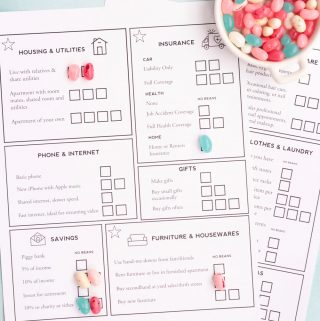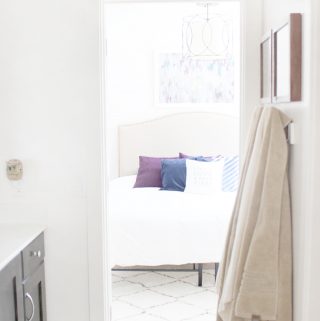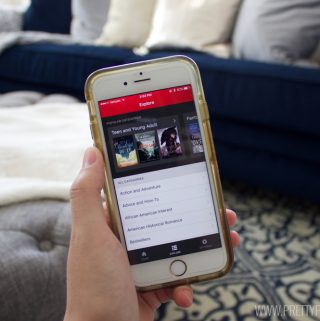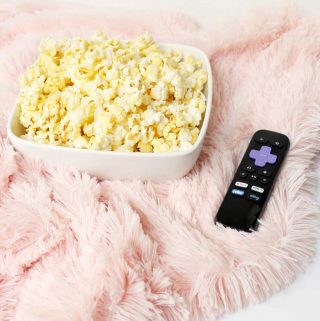If you have already made your financial plan and rough budget workup now is the time to start seriously tracking your expenditures.
In my experience, tracking your spending is the single most important step when it comes to successful budgeting. Anyone can make a budget, then go through the month "trying" to be careful, only to check at the end of the month and find yourself way over. Trust me, I know from experience.
You are not budgeting unless you are tracking your spending.
Not only is this the most crucial step when it comes to your budget, it can also be the hardest. It is hard because it will open your eyes to how much you waste. It is hard because it will force you to cut back. It is hard because it can be time consuming.
I tell you these things in advance so you know it's not just you. Now, you will be prepared for these hard things when they come up and you will have the strength to forge ahead. You're welcome.
Okay fine Jessica! We will track our spending already... but how do we do it?
There are multiple ways you can track your spending. Almost every budgeter will track in one of the three ways described below.
1) Tracking online or with a computer program. Mint.com is a great one if you are looking for an online system that is free and user friendly. I have also heard great things about YNAB (you need a budget). YNAB is not just a tracking system but also a philosophy. In my opinion it is great for those who have irregular incomes or are paid on commissions, but anyone can use it. We use Quicken which is a software you buy for your computer. If you are really detail oriented or further along in your financial planning you may like Quicken. Quicken is the most detailed and intense financial tracking software that I have seen. However, if we were starting over, we would probably start on Mint.com since it is free and has most everything you will need. When Mint.com came around, we were already way too entrenched in Quicken to start over. There are many other budgeting websites as well as software, smart phone apps etc. that can help you track your spending. Try a few and see what works best for you.
These next two methods may seem a bit stone-age with all our modern technology, but they have their benefits.
2) The cash in envelopes method. This is how my parents budgeted while I was growing up. It is pretty basic. At the start of the month you take out of your account the money you have allotted to spend for the month and you divide it into envelopes with your budget categories. Ex: babysitting, groceries, dining out, gas etc. When your cash is gone you are done spending. There are two major pros to this kind of tracking. First, it becomes very real what you choose to spend your money on. If you run out of money in babysitting, but you need $20 to pay the babysitter you have to look at your remaining envelopes and say "where can I spare $20?" Then you physically take your "grocery money" and pay her, knowing that you will have to eat ramen noodles a few nights. If you are a hands on person this might be best for you. The second benefit to this type of tracking is that you don't have to use a card of any type. If you have a lot of debt or have recently overcome a great amount of debt sometimes it is helpful to mentally realize the value of a dollar again. For some people a card is too tempting at the end of the month when things get tight.
3) Tracking expenditures by hand. Remember back in grade school when the teacher put up a projection (remember those?) of a check and taught you how to keep a ledger? This is basically the same thing except you are tracking all of your spending (checks, cards, cash) and you are doing it in the context of your budget categories. It is also nice to be able to easily glance at your receipt and divide it into the appropriate categories. You can keep it anywhere that is convenient for you. We use a big whiteboard that has our budget on it.
"But I thought you said you used Quicken?" We do. We use both. Quicken is amazing and I love that we can look back over the past five years and see every dollar we have spent. We can chart or graph it out in any number of ways, and re-structure our budget easily using the tools provided there. *But, our issue with Quicken was that rather than entering our receipts manually we were just waiting until the end of the month and uploading them all, which is NOT tracking your spending in the context that I am describing to you. Many people are good about entering receipts, but for us it took to long to go in, start up the computer and enter them, so many times we just skipped it, allowing our receipts to pile up. Then all the sudden we had spent a ton of money that we didn't mean to.
We thought we would have to go to the cash method, but we didn't want to lose our reward points I described in this post. So we thought we would try out the by hand method and see if we could make it work. We love it. Since we have started this method we have yet to go over budget (it's been 4 months). We bought a big dry erase board and we put it in a place where we would see it right when were coming in the house. You could even put it in your garage so you see it as you are walking in. At the top of the board we have our budget categories that are flexible and the amount allotted for each of those categories. Then we just subtract as we go for the month. If we run out of money in one category we take it from another category just like the cash envelopes. We only require ourselves to stay under as a whole. At the bottom of our board we have our goals written out so we see them all the time. I also keep shopping and to-do lists on the board because of its convenience.
No matter how you decide to track your spending, I promise it will be key to your budgeting success. If it takes a bit of trial and error that's okay. Don't give up. It is amazing how much you will be able to save by tracking your spending and cutting the excess.








Emilclar
Found this post through Pinterest! I love the idea of the whiteboard but I too am very visual and would love to see a picture of how you write it down on the board. Thank you!
The Black's
We are going to start budgeting. It has become a necesity. I would love to do your whiteboard idea. Could you post a picture of it? I am a very visual person. Thank you for your post!
Dee
I used to do a detailed budget and track in detail with a binder and paper keeping tabs of each envelope and keeping it in the actual bank. I stopped when I returned to work simply because of the sheer amount of time it took to manage a household and track in this time intensive way.
I tried doing the same thing on a spreadsheet later but still kept getting behind in the tracking part and eventually gave up. I know that we do way better when i keep tracking but finding a system to make it simpler and less time consuming is difficult.
i just checked and mint isn't yet available in Australia.
YNAB has 34 days free trial then pay. so i have to trial it then pay. do you know if it is supported in Australia?
the cool looking programs on mac aren't yet supported in Au either. What programs are supported in Au?
I really want a way that isn't going to take hours to administer each week.
Jessica
Dee, I am not sure if YNAB is supported in Australia 100%, but I would be shocked if it wasn't. As long as you have a computer I think you should be fine. You could probably get the free month trial and see if it works well for you there? I have had alot of positive feedback about YNAB so I definately think it is worth a try. It doesn't take too much time to administer once you get the hang of it (that is a killer for me too!) But the bummer is that it does cost if you like it :(.
Sarah
Love this! Tracking is truly the hardest part of budgeting. I haven't gotten a grasp on it yet. These posts are perfectly in sync with my budgeting journey! I have been signed up for mint forever but haven't actually logged in for over a year. I didn't love it. Maybe I will give it another chance and if that doesn't work YNAB sounds great.